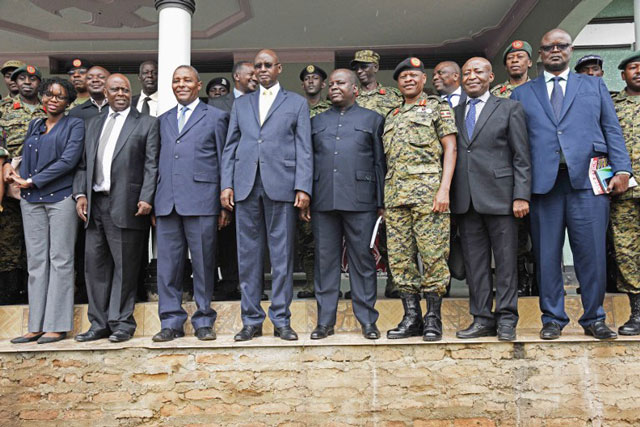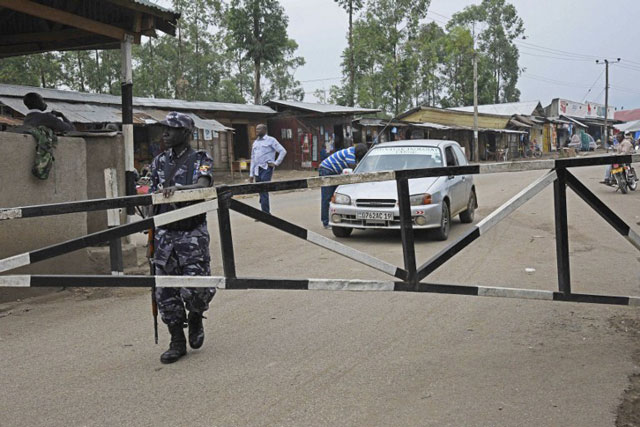
Kasese, Uganda | AFP |
Countries in Africa’s Great Lakes region launched an intelligence nerve centre in Uganda Saturday to better coordinate the fight against a rebel group responsible for massacres in neighbouring DR Congo.
A string of bloody killings in which civilians have mostly been hacked to death around the town of Beni in northeastern Democratic Republic of Congo has left nearly 700 dead since 2014.
The bloodbath has been blamed on the Allied Democratic Forces (ADF), a shadowy group dominated by hardline Ugandan Muslims which has never claimed responsibility for any of the attacks, and whose basic motives and ideology remain unclear.
The centre in Kasese in Uganda, which is near the DRC border and suffered several ADF attacks in the late nineties, will be manned by eight security experts from Uganda, DRC, Tanzania and Kenya, with an unspecified number of staff working under them.
“Once the intelligence information is received at the centre, it will be analysed by the experts, further investigated and disseminated to member countries for action,” said Uganda army spokesman Brigadier Richard Karemire.

The centre started with initial capital of $600,000 (565,000 euros) according to the executive secretary of the regional Great Lakes bloc ICGLR, Zachary Muburi Muita, and is financed by the four core member states.
The ADF started out with the aim of overthrowing Uganda’s President Yoweri Museveni, who was seen as hostile to Muslims. But it went on to absorb other rebel factions into its ranks and started carrying out attacks in 1995.
Gradually pushed westwards by the Ugandan army, the ADF relocated most of its activities to the DRC.
When the Beni massacres started in October 2014, the ADF was quickly branded the culprit by both Congolese authorities and the UN peacekeeping mission MONUSCO.
Kinshasa has insisted on a jihadist motive to the killings. But many observers and experts say there has been no proven link with the global jihadist underground, and that this is a “simplistic” explanation for their acts.
Many ADF recruits — drawn from Tanzania, Burundi, Kenya and as far as Somalia — are not hardcore ideologues but young Muslims lured by the promise of going to study in Saudi Arabia, an intelligence agent and civil society source told AFP in December.
A group run by US researcher Jason Stearns published a report in March claiming several distinct groups “appear to be involved in the massacres”, including soldiers from the regular army.
The government rejected the claims and Stearns was expelled from DRC after the report’s release.
Beni’s mayor Bwanakawa Nyonyi told AFP last year he believes the massacres are carried out by a nebulous group, with politically-motivated “Congolese hands” behind them.
In explaining the violence, some have cited struggles for control of trafficking in various industries like timber, agricultural produce or minerals in a region with extremely rich potential.
 The Independent Uganda: You get the Truth we Pay the Price
The Independent Uganda: You get the Truth we Pay the Price



